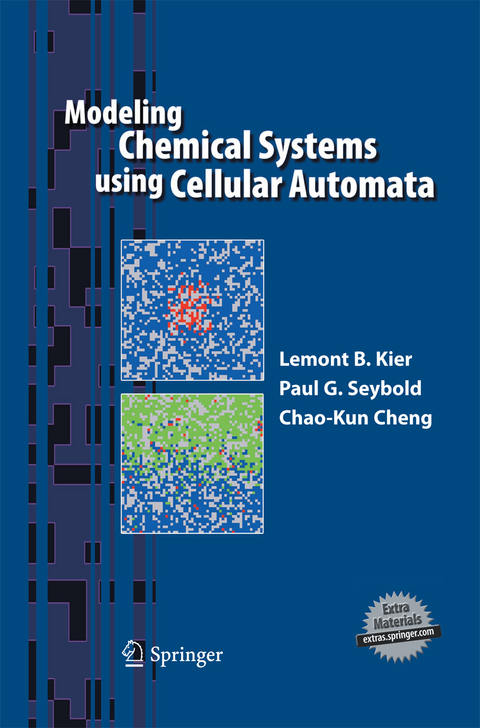
Modeling Chemical Systems using Cellular Automata
Springer (Verlag)
978-94-007-9634-8 (ISBN)
This book is the first of its kind: a textbook and a laboratory manual about cellular automata modeling of common systems in chemistry. The book is designed to be used as a text in undergraduate courses dealing with complex systems and/or as a computational supplement to laboratory courses taught at the undergraduate level.
The book includes:
- Compact descriptions of a large variety of physical and chemical phenomena
- Illustrative examples of simulations, with exercises for further study
- An instructor's manual for use of the program
The book will be of great value in undergraduate courses in chemistry, physics, biology, applied mathematics, and bioinformatics, and as a supplement for laboratory courses in introductory chemistry, organic chemistry, physical chemistry, medicinal chemistry, chemical engineering and other courses dealing with statistical and dynamic systems. It allows the exploration of a wide range of dynamic phenomena, many of which are not normally accessible within conventional laboratory settings due to limitations of time, cost, and experimental equipment.
Thebook is both a textbook on applied Cellular Automata and a lab manual for chemistry (physics, engineering) courses with lab activity. It would supplement other lab work and be an additonal book the students would use in the course.
The authors have assessed the emerging need for this kind of activity in science labs because of the cost of the practical activitites and the frequent failure of some exercises leading to lost didactic value of some experiments. This book is pioneering an alternative that will grow in use.
There are no course directors who would use Cellular Automata exclusively. The authors see an emerging interest in this kind of work in courses that contain lab exercises. One such course is the graduate course that Lemont Kier gives in Life Sciences about complexity. He uses many examples and studies from Cellular Automata in the latter part of this course.
Preface.- Modeling Nature: The System. States of the System. Models in Chemistry.- Cellular Automata: What are Cellular Automata. The Grid and the Cells. The Rules. Running a Simulation. The Output. Putting it all Together. Applications.- Water as a System: Experimental Design. The Movement Rules. The Attributes Recorded. Other Liquids. Applications.- Solution Systems: The Rules. Applications.- Dynamic Aqueous Systems: Oil-Water Demixing. Micelle Formation. Crystal Formation. Percolation.- Water Surface Effects: Water-Surface Encounters. Chromatography. Membrane Permeability.- First Order Chemical Kinetics: Exponential Decay. First Order Equilibrium. Series Reactions. Parallel Reactions. Kinetic and Thermodynamic Reaction Control.- Second Order Chemical Kinetics: Second Order Models.- Additional Applications in Chemical Kinetics: Enzyme Kinetics. Liquid-Vapor Equilibrium.- Use of the CASim Program: The System and Program. Organization of the CA Program. Setting up a Simulation.- Index.- CD-ROM included.
| Erscheint lt. Verlag | 8.11.2014 |
|---|---|
| Zusatzinfo | VIII, 175 p. |
| Verlagsort | Dordrecht |
| Sprache | englisch |
| Maße | 155 x 235 mm |
| Themenwelt | Informatik ► Grafik / Design ► Digitale Bildverarbeitung |
| Mathematik / Informatik ► Informatik ► Theorie / Studium | |
| Mathematik / Informatik ► Mathematik ► Angewandte Mathematik | |
| Naturwissenschaften ► Chemie ► Physikalische Chemie | |
| ISBN-10 | 94-007-9634-X / 940079634X |
| ISBN-13 | 978-94-007-9634-8 / 9789400796348 |
| Zustand | Neuware |
| Haben Sie eine Frage zum Produkt? |
aus dem Bereich


